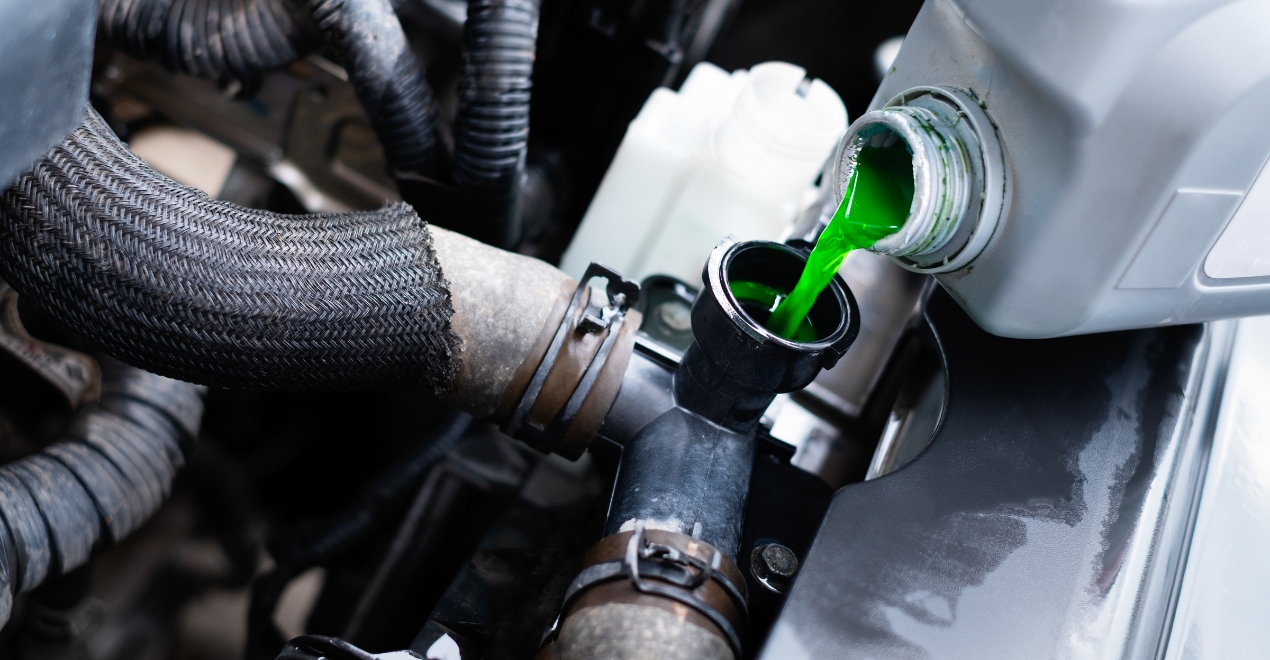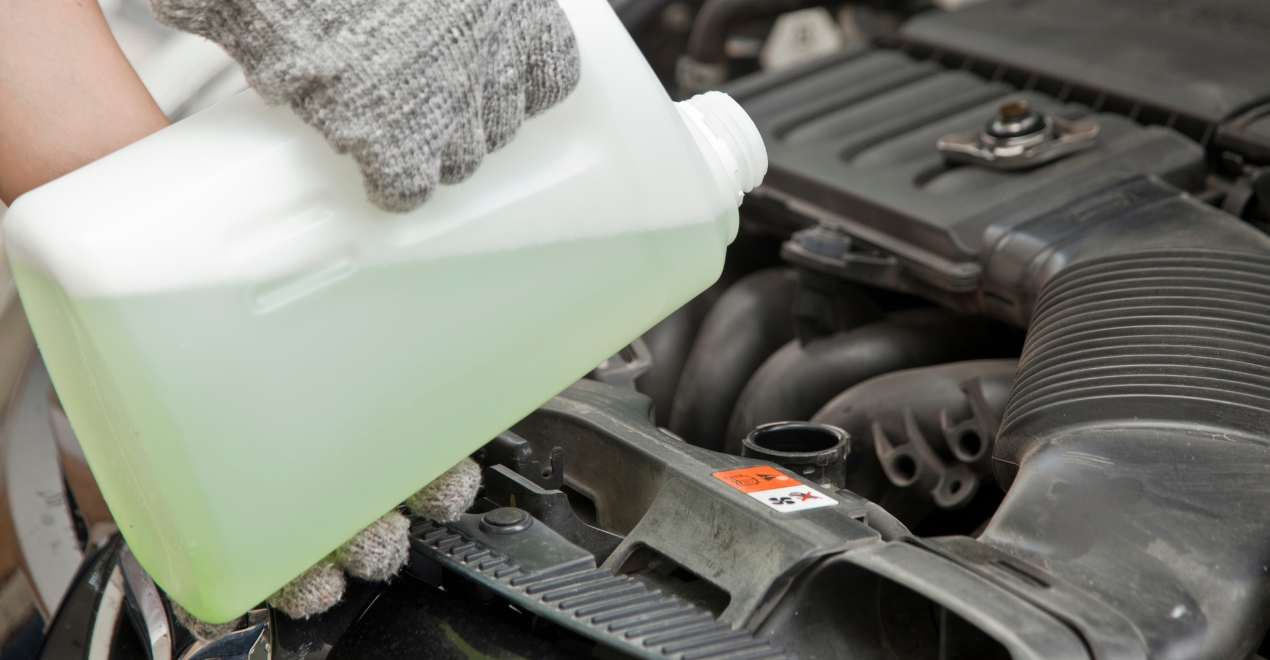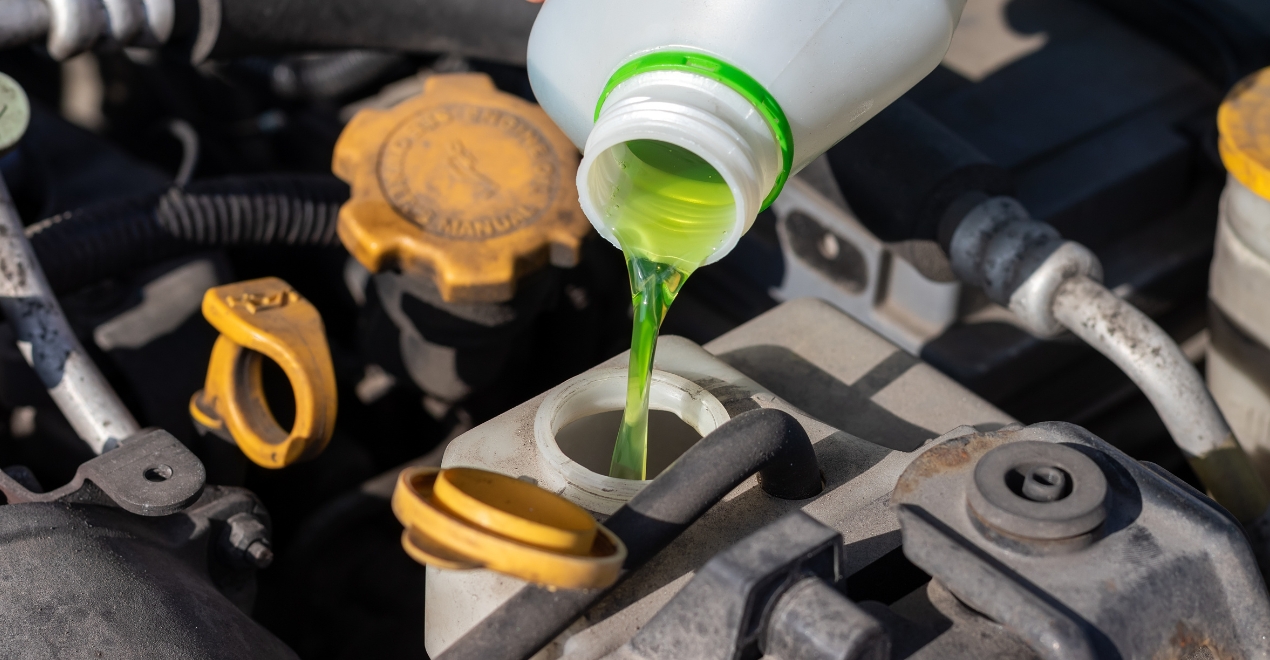Your car’s engine is a finely tuned machine, and maintaining its optimal temperature is crucial for smooth operation and extended life. The cooling system plays a vital role in this process, circulating a mixture of coolant and water to absorb heat and dissipate it through the radiator. However, a coolant leak disrupts this delicate balance, causing overheating and potentially leading to severe engine damage. Tired of coolant leaks disrupting your drive? Let Crossroads Helpline be your go-to solution.
If you suspect a coolant leak in your engine, don’t panic! This comprehensive guide will equip you with the knowledge and steps to diagnose the leak’s source and determine the best course of action for repair.
Signs and Symptoms: Recognizing a Coolant Leak

Early detection of a coolant leak is essential to prevent costly repairs. Here are some telltale signs to watch out for:
-
Low Coolant Level: Your car’s coolant reservoir, often translucent plastic, allows you to visually check the coolant level. Regularly checking your coolant level is a simple yet effective way to identify potential leaks. A consistently dropping coolant level indicates a leak somewhere in the system.
-
Overheating Engine: Coolant plays a critical role in regulating engine temperature. If a leak compromises the coolant system’s ability to absorb and transfer heat, your engine temperature will begin to rise. Keep an eye on your car’s temperature gauge. A reading exceeding the normal operating range or activation of the warning light suggests a potential coolant leak.
-
Visible Coolant Stains: Leaking coolant often leaves traces under your car. These stains can be green, yellow, orange, or pink depending on the type of coolant used. Look for concentrated patches of coolant underneath the engine compartment or around the radiator. Additionally, a sweet smell emanating from the engine bay can be another indicator of a coolant leak.
-
Steam Coming from the Engine Bay: In severe cases, a large coolant leak can cause steam to rise from the engine bay. This is a serious sign of overheating and requires immediate attention to prevent engine damage.
Warning: If you notice steam coming from your engine bay, turn off the engine immediately and let it cool completely before investigating further. Opening a hot radiator cap can lead to scalding injuries.
Diagnosing the Leak: Pinpointing the Culprit
Once you’ve confirmed a coolant leak, the next step is to identify the source. Here are some common areas where coolant leaks can occur:
-
Radiator: The radiator is the primary heat exchanger in your car’s cooling system. Leaks can develop due to corrosion, physical damage from debris, or worn-out hoses connected to the radiator. Look for cracks, bulges, or wet spots around the radiator core and seams.
-
Radiator Hoses: These flexible hoses connect the radiator to the engine and other components in the cooling system. Over time, hoses can deteriorate due to heat exposure and become brittle, leading to cracks and leaks. Inspect the entire length of the hoses for signs of cracking, bulging, or leaking coolant.
-
Water Pump: The water pump circulates the coolant throughout the engine and cooling system. A failing water pump seal can cause coolant to leak from the weep hole, a small opening located near the pump shaft. Look for a wet area around the water pump housing or dripping coolant beneath the pump.
-
Heater Core: The heater core is responsible for providing warm air inside the cabin. A leak in the heater core can manifest as a sweet smell and fogging of the windshield when the heater is turned on. Coolant might also be evident under the passenger-side floor mat.
-
Engine Block or Head Gasket: In rare cases, a leak can originate from a crack in the engine block or a blown head gasket. These are more serious issues and may require professional diagnosis and repair. Symptoms like white
DIY Repairs vs. Professional Assistance: Fixing the Leak

The approach to fixing a coolant leak depends on the severity of the leak and your mechanical comfort level. Here’s a breakdown of your options:
-
DIY Repairs (For Minor Leaks): If the leak appears minor and originates from a readily accessible component like a hose, you might be able to tackle the repair yourself. Here’s what you’ll need:
- Replacement hose clamps and hoses (ensure they are the correct size and type for your vehicle)
- Drain pan for used coolant
- Distilled water
- New coolant (refer to your owner’s manual for the recommended coolant type and mixture ratio)
- Basic hand tools (wrenches, screwdrivers)
Before attempting any repairs, consult your car’s service manual for specific instructions on hose replacement procedures. Generally, the process involves draining some of the coolant, loosening the hose clamps, removing the old hose, installing the new hose with fresh clamps, refilling the cooling system with a mixture of coolant and water, and bleeding the air out of the system (refer to your manual for bleeding procedures specific to your vehicle).
-
Professional Assistance (For Major Leaks and Difficult Diagnoses): If the leak appears significant, the source is unclear, or you’re not comfortable with DIY repairs, seeking professional assistance from a qualified mechanic is highly recommended. Professionals have the experience, tools, and expertise to diagnose the leak accurately and perform the necessary repairs efficiently.
Preventing Coolant Leaks: Proactive Measures for a Healthy Cooling System
Taking preventative measures can significantly reduce the risk of coolant leaks and ensure the long-term health of your car’s cooling system. Here are some key tips:
-
Regular Coolant Maintenance: Coolant deteriorates over time, losing its corrosion protection properties and becoming less effective at heat transfer. Refer to your owner’s manual for the recommended coolant replacement interval and stick to it religiously. Most coolants need to be replaced every 2-5 years depending on the type and your driving conditions.
-
Visual Inspections: Periodically check your engine bay for signs of leaks or deterioration of hoses and clamps. Look for cracks, bulges, or brittleness in the hoses and ensure
Tightening Up Your Routine: Maintaining a Leak-Free Cooling System

-
Tightening Hose Clamps: Over time, hose clamps can loosen due to vibrations and thermal cycling. Every few months, give the hose clamps around the radiator hoses, heater core hoses, and water pump a gentle but firm turn with a wrench to ensure a secure connection. Avoid overtightening, as it can damage the clamps or hoses.
-
Scheduled Maintenance: Regular car maintenance often includes a cooling system inspection. A qualified mechanic can thoroughly check the entire system for potential leaks, hose condition, and coolant level. Addressing minor issues early on can prevent them from escalating into major repairs down the road.
-
Using the Right Coolant: Always use the coolant type recommended by your vehicle’s manufacturer. Using the correct coolant ensures compatibility with the cooling system materials and provides optimal corrosion protection.
-
Checking Coolant Level Regularly: Develop the habit of checking your coolant level regularly, ideally every other week or before long trips. A consistent drop in coolant level can indicate a leak.
-
Addressing Overheating Immediately: If your car overheats, pull over to a safe location and turn off the engine immediately. Do not attempt to restart the engine until it has cooled down completely. Overheating can cause significant engine damage, so seek professional assistance as soon as possible.
By following these preventive measures, you can significantly reduce the risk of coolant leaks and ensure your car’s cooling system functions optimally for years to come. Remember, a healthy cooling system is essential for maintaining optimal engine performance and longevity.
Conclusion
A coolant leak might seem like a daunting issue, but with the right knowledge and approach, you can diagnose the problem and fix it efficiently. For minor leaks, DIY repairs might be feasible. However, for major leaks or uncertain diagnoses, seeking professional assistance is highly recommended. By prioritizing preventive measures like regular coolant maintenance and visual inspections, you can keep your cooling system healthy and avoid leaks altogether. Remember, a well-maintained cooling system is crucial for a happy engine and trouble-free miles on the road.

